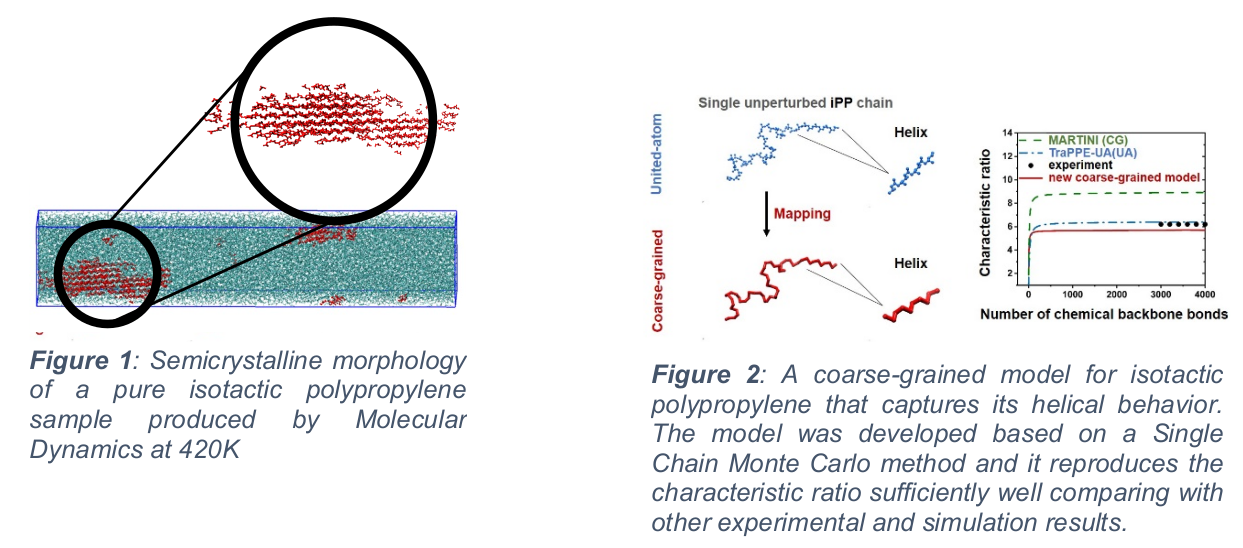
Title: Molecular-dynamics insights into the flow-induced crystallization of isotactic polypropylene.
Speaker: Nikolaos I. Sigalas (TUE)
Abstract:
Understanding the mechanisms of crystallization of isotactic polypropylene (iPP) under flow is important for designing easily recyclable and efficient packaging products in the future. Current experiments cannot fully predict how the flow-induced crystallization(FIC) is affected by temperature and molecular-weight distribution. Molecular simulations can be used toprovide useful insights on this phenomenon. So our project aims at developing a multiscale computational approach to address the processing-properties relations in the crystallization of polypropylene-based nanocomposites.
In order to understand the crystallization mechanisms, we have performed molecular-dynamics computer simulations of pure bulk isotactic polypropylene(iPP). Two main strategies have been employed: flow-induced crystallization and coarse-graining. The former has been proved to accelerate significantly the crystallization1 and the latter have been extensively used over the years. Given these two powerful approaches, crystallization can be observed on both spatial and temporal scales accessible to molecular simulations.
Till now, in our project, some significant steps have been accomplished towards the multiscale modeling of polypropylene. First of all, we mimic the Machine Direction Orientation process, the process that is used for making films. Following this process, systems up to 2000 monomers per chain have been stretched up to 3 times their initial length with strain rate 106s-1 (2μs of total simulation time) and have been crystallized successfully (Figure 1) Further, the semicrystalline samples have been analyzed at different temperatures by calculating crystallinity, structure factor and various order parameters. Finally, we have reproduced an iPP helical structure at a coarse-grained level and we propose a methodology for developing a coarse-grained force field that can effectively capture this helical behavior2 (Figure 2).
- Yamamoto, T Macromolecules 2014, 47, 3192−3202
- Sigalas N., Anogiannakis S., Theodorou D. N., Lyulin A. Soft Matter, 2022, 18, 3076–3086